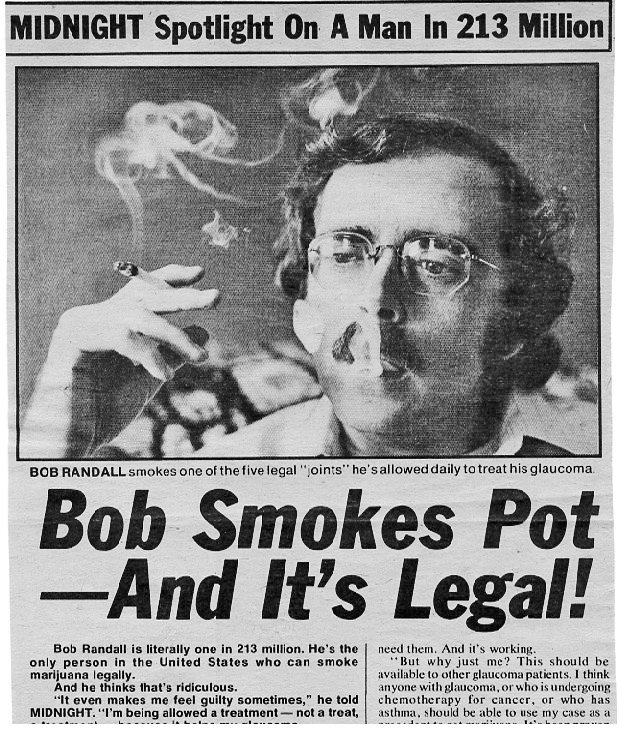Scroll down for more
⬇️
Project 50 is working to preserve the history of the medical cannabis movement, particularly the early years 1976-1996. Those years pre-date the internet, often making it difficult to find the stories of the courageous individuals who paved the way for the cannabis industry of today.
Scroll down for more
⬇️
November 1976
The medical cannabis movement began in 1976 when Robert C. Randall cracked the medical prohibition against cannabis and gained legal access to cannabis for the first time since 1937. America had forgotten medical cannabis and Randall began the arduous task of re-educating the country about this ancient plant’s remarkable therapeutic properties.
Robert’s case generated enormous publicity and he immediately heard from others who had discovered the therapeutic utility of cannabis. He founded a movement and the nation’s first non-profit association dedicated to medical cannabis reform, the Alliance for Cannabis Therapeutics (ACT).
Now his widow, Alice O’Leary Randall, who co-founded the medical cannabis movement, is working to preserve the stories of these brave individuals who often gave the last good days of their lives to reform the medical cannabis laws of this country. Their stories must be remembered.
Project 50 is working to preserve the history of these efforts. There is a lot to learn. It didn’t all start with California…
Lynn Pierson in the spring of 1978 with his home grown marijuana plants.
February 1978
The New Mexico state flag.




